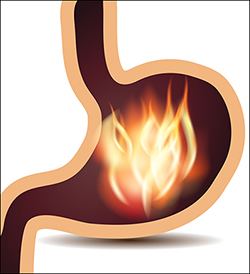Tridoshas [Three basic principles ]
Dr kavita vyas [ayurveda consultant)
Ether, Air, Fire, Water and Earth, the five basic elements manifest in the human body as three basic principles, known as the tridosha.
-From the ether and air elements, the bodily air principal called as Vata-dosha is manifested.
-The fire and water elements manifest together in the body as the fire principle called pitta.
-The earth and water elements manifest as the bodily water principle known as kapha.
These three elements vata,pitta, kapha govern all the biological, psychological and psychopathological functions of the body, mind and conciousness.They acts as basic constituents and protective barriers for the body in its normal physiological condition.
When become out of balance they contribute to disease process. The tridosha are responsible for the arising of natural urges and for individual preferences in foods. They govern the creation ,maintenance and destruction of bodily tissue and the elimination of waste products from the body. They are also responsible for psychological phenomena including such emotions as fear, anger and greed and for the highest order of human emotions such as under standing compassion and love .Thus the tridosha are the foundation of the psychosomatic
existence of man.
 |
| Tridosha |
Vata
Vata governs breathing,blinking of the eyelids, movements in the muscles and tissues, ulsations in the heart, all expansion and contraction,the movements of cytoplasm and the cell membranes, and the movement of the single impulses in the nerve cells. Vata also governs such feelings and emotions freshness, nervousness, fear, anxiety, pain,tremors etc..
The large intestine, pelvic cavity, bones, skin, ears and thighs are the seats of vata. If the body develops an excess of vata, it will accumulate in these areas.
Pitta
It translated as fire, although the term does not literally mean fire. The fire of candle or the fire in a fire place may be seen; however the bodily heat energy, the pitta dosha, which manifests as metabolism is not visible in this way.
Pitta governs digestion, absorbption, assimilation, nutrition, metabolism, body temperature, skin coloration, the luster of the eyes, intelligence and understanding. Psychologically, pitta arouses anger, heat and jealousy.
The small intestine, stomach, sweat glands, blood, fat, eyes and skin are the seats of pitta. Pitta is formed from the two elements fire and water.
Kapha
The translation of kapha is biological water.This bodily principle is formed from the two elements, earth and water. Kapha cements the elements in the body, providing the material for physical structure. This dosha maintains body resistance. Water is the main constituent of kapha and this bodily water is responsible physiologically for biological strength and natural tissue resistance in the body; gives biological strength, vigor and stability; supports memory retention, gives energy to the heart and lungs and maintains the immunity. Kapha is present in the chest, throat, head, sinuses, nose, mouth, stomach, joints, cytoplasm, plasma and liquid secretions of the body such as mucous. Psychologically kapha is responsible for emotions of attachment, greed and long standing envey, it is also expressed in tendencies toward calmness, forgiveness and love. The chest is the seat of kapha. A balance among the tridosha is necessary for the perfect health.
 |
| Vata,Pitta,Kapha |
Functions of Tridosha
Vata
Movement, Breathing, Natural urges, Transformation of tissues, Motor functions, Sensory functions, Ungrounded ness, Secretions, Excretions, Fear, Emptiness, Anxiety.
Pitta
Body heat, Temperature, Digestion, Perception, Understanding, Hunger, Thirst, Intelligence, anger, hate, Jealousy.
Kapha
Stability, Energy, Lubrication, Unctuousness, Forgiveness, Greed, Attachment, Accumulation, Holding, Possessiveness.
 |
| Tridosha Theory |
TWO DOSHAS OF MIND
Rajas and Tamas are known as Manas Dosha (Doshas of mind ).In the Vedic system , mental nature is usually judged according to the gunas,the prime attributes of nature (Prakrati) as satwa, rajas and tamas. These indicate the mental traits respectively of clarity, distraction and dullness. Out of the three qualities (Gunas) of mind –Satva, Rajas and Tamas, it is only the later two (Rajas and Tamas) that cause vitiation of the mind, the former one being non pathogenic, so it is not consider as dosha.
RAJAS
Rajas is distraction or turbulence in the mind .It is the mind agitated by desire. Literally it means stain or smoke. Rajas disturb the thoughts and imagining. It includes willfulness, anger, manipulativeness and ego. It involves the seeking of power, nature.
TAMAS
Tamas is dullness, darkness and inability to perceive. It is the mind clouded by ignorance and fear. It means heaviness and lethargy.Tamas creates sloth, sleep and inattention. It involves lack of mental activity and insensitivity and domination of the mind by external or subconscious forces .Tamas creates an animal nature.


![ACHARA RASAYAN in Ayurveda [Behavioural regimen which acts as Rejuvenation]](https://blogger.googleusercontent.com/img/b/R29vZ2xl/AVvXsEgWmm8CupFTu_vyWDtEsY9EdG8A-ZlQLOdx6lrm4qnctDJ1bli1zR7MQMebwL79XhXowikAcqIk-al0sQubhTttS6H69e3zIBK-UORc5BFH9eaWwkznPG-yWHqoQ-za1gNhVqwgwomwUiKA/w680/Screenshot_20191227-154658_YouTube.jpg)

0 Comments